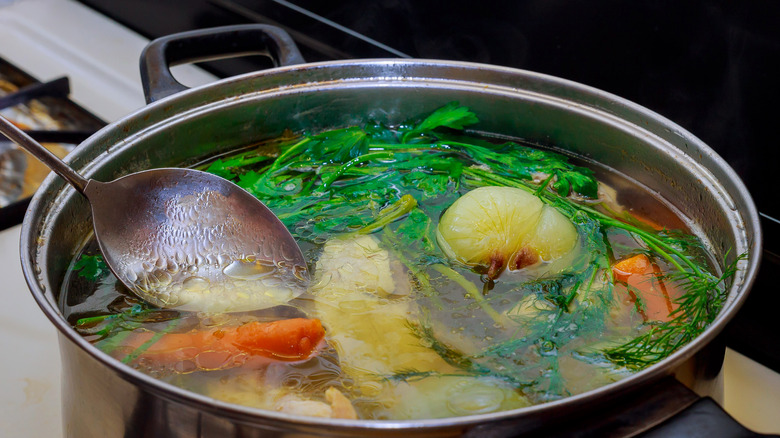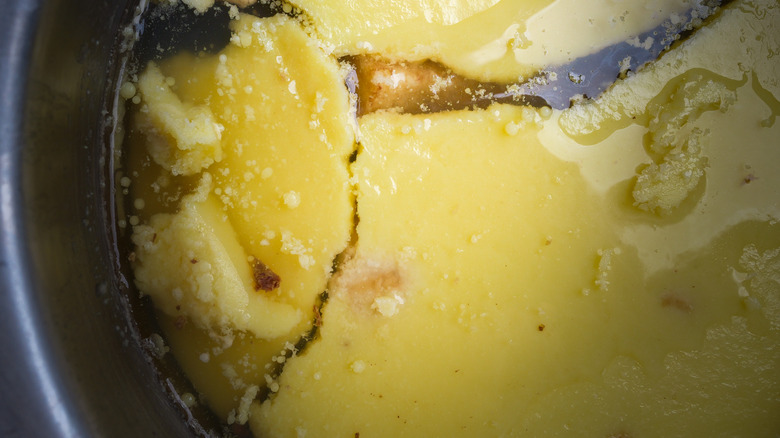All You Need Is A Metal Spoon To Skim Fat From Stock
When creating a rich and flavorful stock, whether it's for a hearty soup or a base for sauces, chefs and home cooks alike often encounter a common occurrence: The formation of a layer of fat on the surface. This fat, while a natural byproduct of simmering meats and vegetables, can detract from the desired clarity and texture of the stock or bone broth. It can leave an unpleasant greasy feel and overshadow the delicate flavors that have been carefully developed during the gentle cooking process. The key to overcoming this challenge lies in effectively removing this fat layer, and you can do so by simply using an everyday metal spoon.
The method is straightforward, requiring no specialized equipment, and can be easily mastered by anyone in the kitchen. After the stock has cooked, allow it to sit for a few minutes for the fat to rise to the top, then take your spoon and gently place its edge just below the surface of the liquid. Carefully tilt the spoon so that the fat slides onto it, then remove and discard the fat (but not down the sink or it can cause blockages). Repeat this process, working around the pot, until you've skimmed off most of the fat. This process requires a bit of patience and a steady hand, but it's incredibly effective for immediate results. However, if it proves too complex for your liking, there's an alternative way.
Chill the stock for easy fat extraction
Another effective method for skimming fat from stock involves chilling the stock first. This technique is particularly useful if you're preparing your stock in advance or if you find it challenging to skim fat from a hot liquid. After your stock has finished cooking, allow it to cool down a bit at room temperature, strain it then transfer the liquid to the refrigerator to chill for six to eight hours. As the stock cools, the fat, which is less dense than the liquid, will rise to the surface and solidify.
Once the fat has hardened into a solid or semi-solid state use your spoon to gently scrape it off from the surface. It will usually come off in chunks or sheets, which can be easily discarded. The goal here is to remove as much of the fat as possible without taking too much of the stock itself. This chilling method offers a few advantages. It's generally easier and less messy than skimming hot liquid, and it allows for more precise removal of fat. It's also an excellent option for stocks you intend to store or use later, as the fat can be removed just before the stock is used, ensuring it remains fresh and clear. So, with either the direct skimming method or the chilling method, you can ensure your homemade stocks are always light, flavorful, and free of grease.

